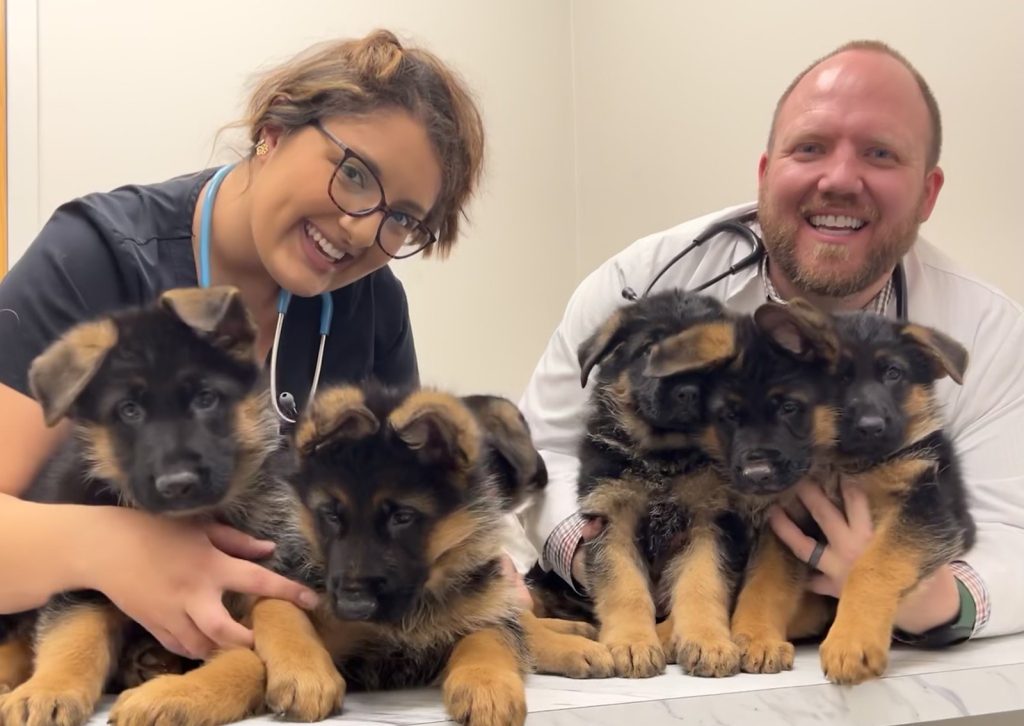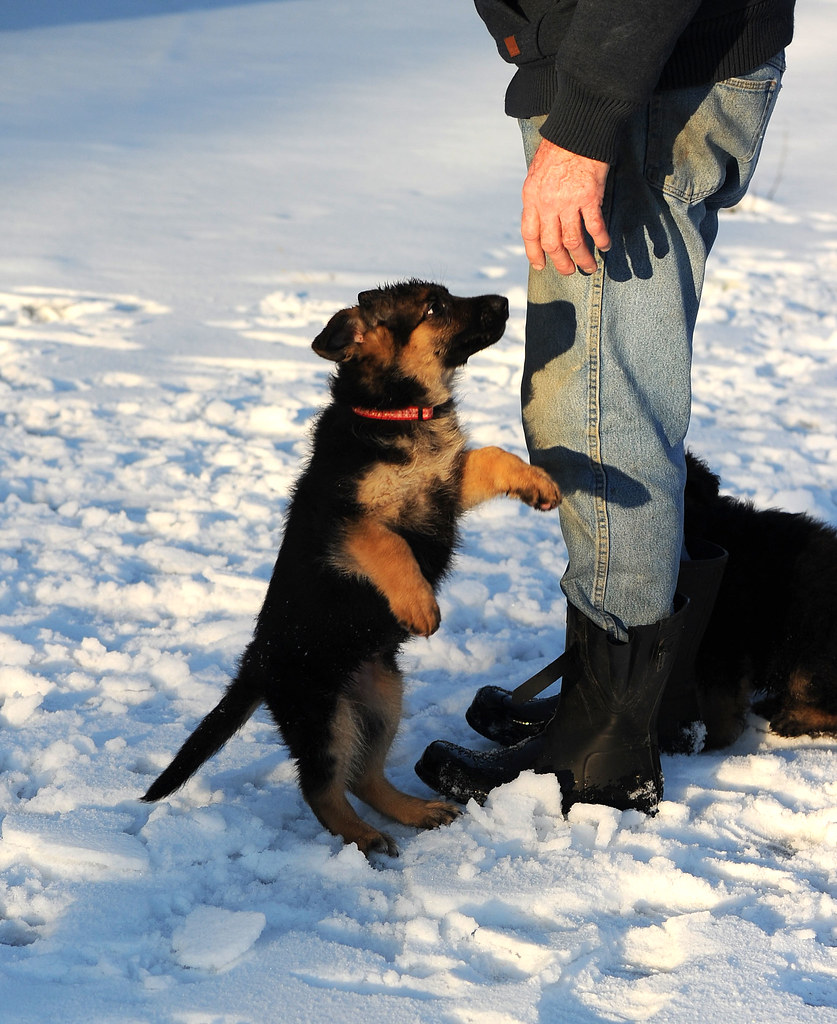This Story Behind German Shepherd Life Expectancy Can Haunt You Foreve…
페이지 정보

본문
 Health Issues That Affect German Shepherd Life Expectancy
Health Issues That Affect German Shepherd Life Expectancy German Shepherds peak between ages 2 and 6. The German Shepherd is at its best in terms of physical and mental agility.
German Shepherds peak between ages 2 and 6. The German Shepherd is at its best in terms of physical and mental agility.They are more at risk for cancer, musculoskeletal problems, and other health conditions that could affect their lives.
German Shepherds of the working line typically lead more active lives than their show line counterparts. They require a nutritious diet to meet their active lifestyle and workout demands.
Cushing's Disease
German Shepherds are susceptible to various health issues, including elbow dysplasia, hip dysplasia, and. They also are susceptible to Cushing's Disease, degenerative myelopathy and hip dysplasia. Knowing these conditions and taking the right steps to treat or prevent them can allow your dog to have a longer lifespan. Regular veterinary visits, proper nutrition, german shepherd kaufen and regular exercise can keep this large breed in good health.
Cushing's disease (hyperadrenocorticism) occurs when a pet's body produces too much cortisol, a natural steroid. The condition is typically caused by a tumor that has formed on the pituitary gland, or Einen Deutschen SchäFerhund Kaufen one of the adrenal glands. In 80% to 85percent of cases, the tumor develops on the pituitary, a small organ that is located near the base of brain. About 15 percent of the instances the tumor is situated on the adrenal glands which are located above the kidneys.
Cushing's disease causes pets to be more active and consume more food than normal. Cushing's may also cause increased thirst and urination. This means that the pet has to drink more fluids, and schäferhund welpen österreich kaufen also go outside for potty breaks more often. Other signs of the condition include loss of hair, a potbellied appearance, and a lack of energy.
A veterinarian can diagnose the condition by drawing blood and conducting an adrenocorticotropic hormonal stimulation test. This test involves injecting ACTH into the patient and analyzing their adrenal response. The results indicate how high or low his cortisol levels are.
Once a dog is diagnosed with Cushing's disease he needs medication for the duration of his life. This medication will stop the growth of the tumor and keep his symptoms under control. If they are properly monitored and treated, the majority of dogs suffering from this condition live normal lives. However, the condition can be fatal if not detected and treated in the early stages.
Epilepsy
German Shepherds that are diagnosed and treated for epilepsy can live to a healthy age and enjoy a happy life. Uncontrolled seizures can cause a dog to die from oxygen deprivation or a traumatic injury. Untreated epilepsy can also lead to depression or a lack of appetite or drink, which can quickly turn fatal.
The way the owner manages the condition can have an impact on the effects of epilepsy on German Shepherds. A pet owner who is able to monitor the dog's medication, schäferhund Kaufen öSterreich develop appropriate strategies for managing seizures and establish a strong support network is more likely to prolong their pet's life span.
Like other dog breeds German Shepherds, too, suffer from dental disease. Left untreated, this problem could cause irreparable damage to the gums and teeth and even cause infections in other areas of the body, like the kidneys, SchäFerhundwelpen, Api.Mguwp.Net, liver and the heart. Regular dental hygiene for dogs can lower the chance of developing this condition.
The chests that are deep of the Shepherd breed makes them more prone to bloating. This stomach condition is dangerous and can occur when the intestines twist and fill with gas, cutting off blood flow to the stomach and spleen. The condition can cause death in less than 30 minutes if not treated promptly. If your Shepherd is showing signs of bloat, such as Heaving, retching, or an enlarged stomach, or is in a praying position (front feet are down, and the rear end is up) It is recommended to go to an emergency vet as soon as you notice.
German Shepherds with bloat are at a higher chance of developing hip dysplasia or degenerative myelopathy. This is why it's so important to keep your dog current with regular veterinary visits and preventative treatments.
Elbow Dysplasia
The elbow is a hinge joint that connects the humerus (the long bone of the upper forelimb) as well as the radius and ulna (the two bones that form the lower forelimb). The three bones have to fit perfectly to endure an entire lifetime of motion. When they don't, a condition called elbow dysplasia develops. It's the most common cause of lameness in front legs (limping) in dogs.
In certain instances of the disease the cartilage between bones erodes and leads to swelling, Deutscher SchäFerhund Kaufen öSterreich pain and lameness. The damage is not irreparable therefore early diagnosis and treatment are crucial.
The first signs of the condition in dogs are a slight limp or intermittent one, especially during exercise or when getting up from a seated position. As the disease progresses, a dog's range of motion in the elbow decreases. There may be fluid in the joint.
There are three main kinds of elbow dysplasia: Fragmented Coronoid Process, Osteochondrosis of the Humeral Condyle, and Ununited Anconeal Process. Each of these conditions has a unique appearance on x-rays and can be seen in one or both elbows.
Rigorous hip and elbow screening of breeding animals is the best option to avoid these issues. But, despite screenings these conditions can still happen. The most effective approach is to only breed dogs that come from parents who have been proven to have good elbows. This will ensure that the genes responsible for elbow dysplasia are not passed onto offspring.
Degenerative Myelopathy
Degenerative Myelopathy is a neurological disorder that affects German Shepherd dogs slowly and causes weakness of the hind legs, is a variant of Degenerative Myelopathy. The signs of DM generally manifest in older dogs and eventually develop into paralysis. The condition is regarded as the canine equivalent to amyotrophic lateral sclerosis (Lou Gehrig's disease). It is not known the reason why some dogs suffering from this disease develop it and others don't, despite being genetically predisposed.
Unfortunately, there's no cure for DM. The symptoms can be treated with medication, however the disease is progressive and eventually leads to paralysis of the forelimbs, too. Some dogs will continue to endure for months or years with a good quality of life, but it is common for owners to elect euthanasia once the dog becomes incapable of standing or walking on their own.
Your veterinarian will conduct an examination for neurological disorders and will create an accurate medical history to diagnose DM. The neurologist will search for other diseases with similar clinical signs and will take blood samples to check for the genetic mutations that are associated with this condition. A cerebrospinal fluid sample may also be obtained to enable analysis and to exclude other diseases. The neurologist will likely recommend MRI imaging using our sophisticated diagnostic imaging services. This will enable your vet to pinpoint areas of the spine that are affected with DM and monitor the progress of the disease. In addition physical rehabilitation therapy can be beneficial for DM patients and can help slow the progression of the disease.
Intervertebral Disc Disease
German Shepherds are susceptible to certain health issues that may affect their lifespan. Knowing about these conditions and how they affect your dog can assist you in taking preventative measures that support their longevity.
Intervertebral Disc Disease (IVDD) occurs when the outer or inner of the spinal disk "donut" isn't remain where it belongs. Each disk has a tough fibrous outer ring, called an annulus fibrousus, and a non-compressive nucleus pulposus inside that absorbs the impact. If the disk is damaged, the soft nucleus may strike the spinal cord with tremendous force, causing severe pain, weakness or paralysis. IVDD is usually a degenerative condition, however sudden trauma can lead to herniation in dogs with weak disks.
Type I IVDD is defined by a sudden rupture into the spinal canal of nucleus of the disc. This can cause severe back pain arching back, a weakness of the rear limbs, and lameness in the hind limbs. This condition can also lead to weakening, incontinence, and incoordination. If the spinal cord gets compressed and dies, your dog will become completely paralyzed, often unable to use their rear legs in any way.
The onset of IVDD type II is more gradual and usually occurs in older dogs. Normal wear and tear causes annulus fibers to grow larger with fluid. This causes herniation and compression of the spine. In contrast to Type I IVDD, this form isn't caused by trauma or intense exercise. The symptoms include a reluctance to turn the head or back, an arched back and a walk that seems weak or wobbly on the rear leg.
- 이전글10 Things Your Competition Can Lean You On You Can Buy A Driving License 25.04.02
- 다음글5 Killer Quora Answers On Key Subaru 25.04.02
댓글목록
등록된 댓글이 없습니다.
 KOR
KOR ENG
ENG CHN
CHN JPN
JPN